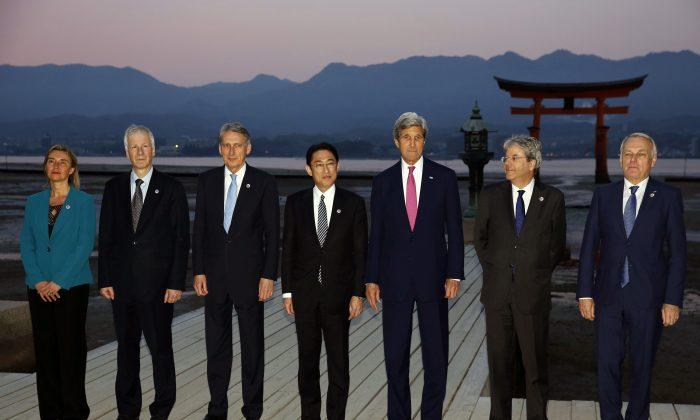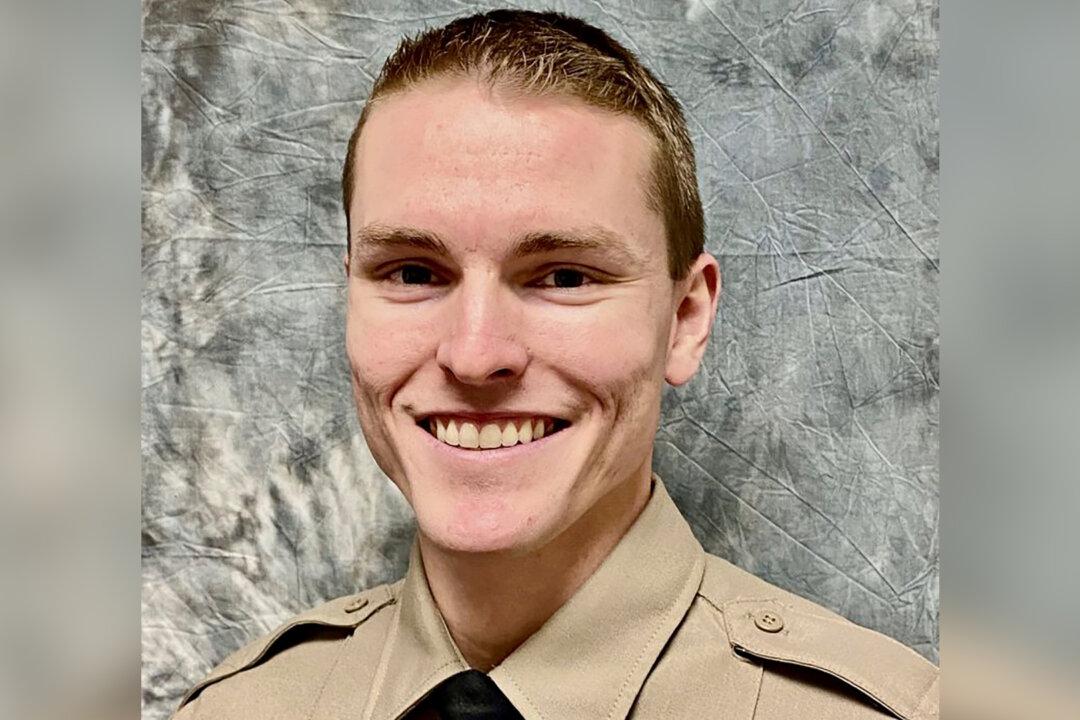HIROSHIMA, Japan—Foreign ministers from the Group of Seven industrialized countries are meeting in the western Japanese city of Hiroshima on Sunday and Monday.
Germany’s Frank-Walter Steinmeier was to miss the first day sessions due to aircraft problems at departure.
Here are five things to know about the annual gathering of the top diplomats from Britain, Canada, France, Germany, Italy, Japan, and the United States:
Why Hiroshima?
Japan hopes to send a message of non-proliferation and peace. Once all but annihilated by a U.S. atomic bomb, Hiroshima has risen back as a symbol of peace and nuclear disarmament. It’s also the hometown of host Foreign Minister Fumio Kishida. Hiroshima can also entertain the guests with its homegrown oysters, reputed to be Japan’s best, and the picturesque Miyajima shrine by the sea.
Kishida told Sunday’s reception that he hoped the experience would help the visiting ministers to “learn how Hiroshima has risen back from the atomic bombings to become the symbol of peace and hope.”
Peace Memorial Park and A-Bomb Museum
The foreign ministers will honor the dead at the Hiroshima Peace Park and visit the nearby Atomic Bomb Museum on Monday, a dream-come-true for many surviving victims, who have for decades campaigned to bring leaders of nuclear states to Hiroshima to see the damage. Japan also hopes the ministers will issue a separate “Hiroshima declaration” on nuclear non-proliferation, in addition to the usual communique.
On the Agenda
The recent attacks in Belgium are likely to put terrorism and violent extremism high on the agenda, along with the refugee issue, nuclear non-proliferation including North Korea’s recent rocket and missile launches, maritime security amid China’s assertive posture in the East and South China seas, as well as the Middle East and Ukraine.
Russia Absent but on Agenda
A key player not in the room is Russia. The eighth member of what used to be the G-8 has been excluded since last year because of its support for separatist rebels in Ukraine. Russia’s foreign minister is due to visit Tokyo to meet Japanese counterpart Kishida later in the week, a possible prelude to a visit by Japanese Prime Minister Shinzo Abe to Russia in May. Other G-7 countries might not welcome such a trip.
Summit Opener
The foreign ministers’ meeting is the first of 10 ministerial meetings including finance, energy, environment and agriculture, held across the country ahead of the G-7 leader’s summit on May 26-27 in the coastal city of Shima in central Japan, near Ise, home to a Shinto shrine known as the nation’s most sacred with links to the Emperor.






Friends Read Free